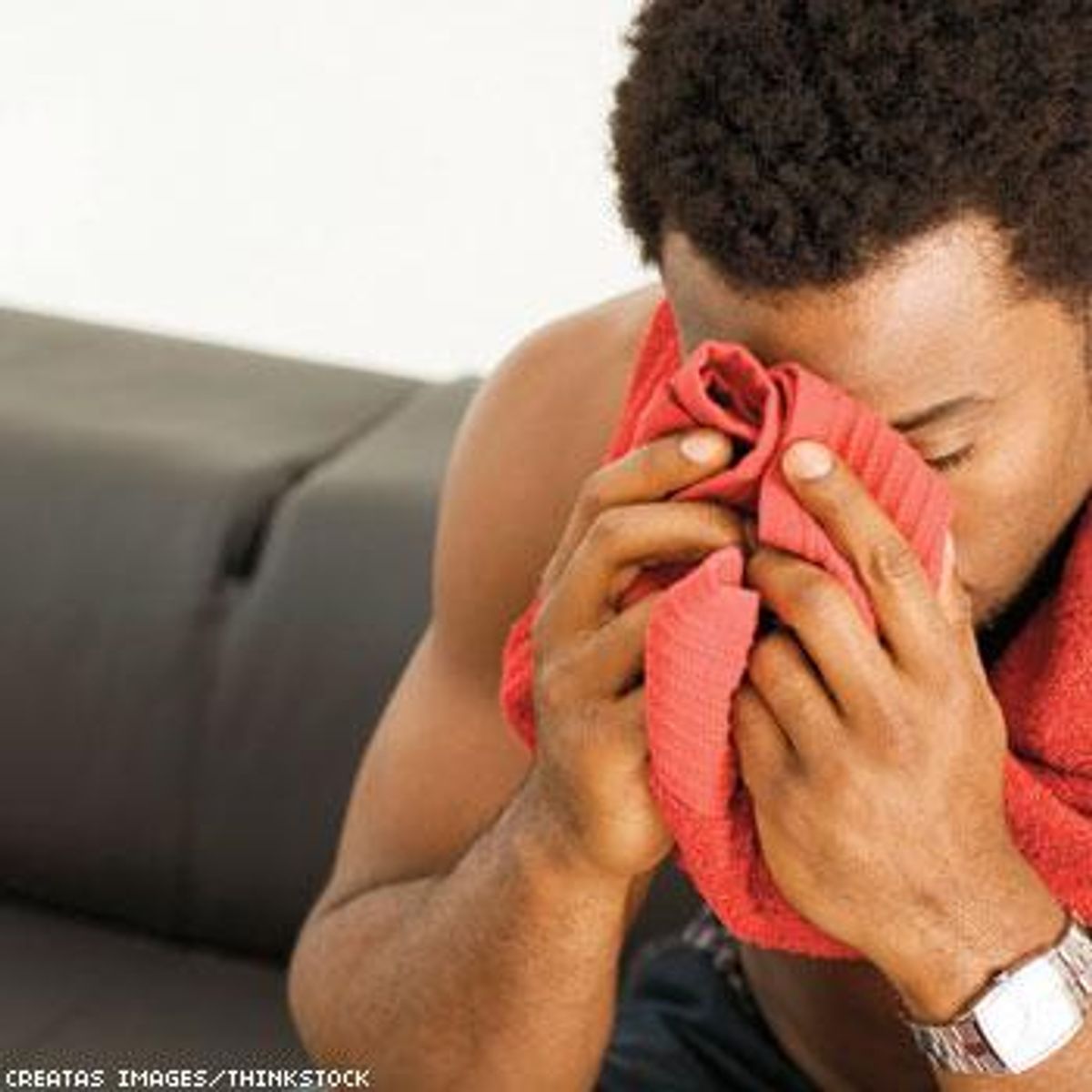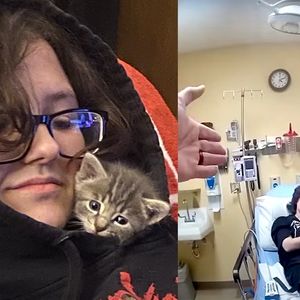Treatment GuideJust DiagnosedSex & DatingAfrican AmericanStigmaAsk the HIV DocPrEP En EspañolNewsVoicesPrint IssueVideoOut 100
CONTACTCAREER OPPORTUNITIESADVERTISE WITH USPRIVACY POLICYPRIVACY PREFERENCESTERMS OF USELEGAL NOTICE
© 2024 Pride Publishing Inc.
All Rights reserved
All Rights reserved
By continuing to use our site, you agree to our Private Policy and Terms of Use.
As much as you might not want to admit it, your friends are probably more popular than you are. But ultimately, knowing this fact could help you because the 'friendship paradox' could help predict the spread of infectious disease. Two researchers--Nicholas Christakis, a professor of medicine, medical sociology, and sociology at Harvard University, and James Fowler, a professor of medical genetics and political science at the University of California, San Diego--have used the paradox to study the 2009 flu epidemic among 744 students. The researchers say their findings, which were reported online in September in the journal PLoS One, point to a novel method for early detection of contagious outbreaks. Analyzing a social network and monitoring the health of its central members is an ideal way to predict an outbreak. But such detailed information simply doesn't exist for most social groups, and producing it is time-consuming and expensive. But the "friendship paradox," first described by a sociologist in 1991, potentially offers an easy way around this. Simply put, the paradox states that, statistically, the friends of any given individual are likely more popular than the individual herself. Take a random group of people, ask each of them to name one friend, and on average the named friends will rank higher in the social web than the ones who named them. If this is hard to fathom, imagine a large cocktail party with a host holding court in the center while, at the fringes, a few loners lean against the walls staring at their drinks. Randomly ask the partygoers to each name a friend, and the results will undoubtedly weigh heavily in the direction of the well-connected host. Few people will name a recluse. Just as they come across gossip, trends, and good ideas sooner, the people at the center of a social network are exposed to diseases earlier than those at the margins. As the 2009 influenza season approached, Christakis and Fowler, who are authors of the book Connected: The Surprising Power of Our Social Networks and How They Shape Our Lives, decided to put these basic features of a social network to work. So they contacted 319 Harvard undergraduates who in turn named a total of 425 friends. Monitoring the two groups--their original contacts and the named friends--both through self-reporting and data from Harvard University's health services department, the researchers found that, on average, the friends group manifested the flu roughly two weeks prior to the random group using one method of detection and a full 46 days prior to the epidemic peak using another method. 'We think this may have significant implications for public health,' Christakis says. 'Public health officials often track epidemics by following random samples of people or monitoring people after they get sick. But that approach only provides a snapshot of what's currently happening. By simply asking members of the random group to name friends and then tracking and comparing both groups, we can predict epidemics before they strike the population at large. This would allow an earlier, more vigorous, and more effective response.' 'If you want a crystal ball for finding out which parts of the country are going to get the flu first,' Fowler adds, 'then this may be the most effective method we have now. Currently used methods are based on statistics that lag the real world--or at best are contemporaneous with it. We show a way you can get ahead of an epidemic of flu--or potentially anything else that spreads in networks.' Indeed, the researchers say that the same method could be used even more widely to anticipate epidemics of behaviors like drug use or even the diffusion of ideas or fashions. John Glasser, a mathematical epidemiologist at the U.S. Centers for Disease Control and Prevention in Atlanta (who was not involved in this research), says, 'Christakis's and Fowler's provocative study should cause infectious disease epidemiologists and public health practitioners alike to consider the social contexts within which pathogens are transmitted. This study may be unique in demonstrating that social position affects one's risk of acquiring disease. Consequently, epidemiologists and social scientists are modeling networks to evaluate novel disease surveillance and infection control strategies.'
Want more breaking equality news & trending entertainment stories?
Check out our NEW 24/7 streaming service: the Advocate Channel!
Download the Advocate Channel App for your mobile phone and your favorite streaming device!
From our Sponsors
Most Popular
Diets that mimic fasting reverse aging: study
March 07 2024 5:28 PM
The Most Amazing HIV Allies & Advocates of 2023
November 03 2023 12:51 PM
Before AIDS, gay artist Rex drew hot men on the prowl — then he disappeared
April 11 2024 3:15 PM
PrEP without a prescription now a reality in California
February 06 2024 8:37 PM
This OnlyFans Star Is Trying to Raise $100K to Fight HIV
December 26 2023 3:05 PM
Injectable HIV treatment, prevention: Everything you need to know
March 26 2024 3:28 PM
The naked Black body takes center stage in this HIV campaign
January 03 2024 1:07 PM
8 dating tips for gay men from a gay therapist
March 21 2024 2:50 PM
Mr. Gay World wants to make sure you're OK
January 02 2024 4:56 PM
Plus: Featured Video
Latest Stories
Discover endless fun at The Pride Store: Games & electronics for all ages
April 09 2024 4:25 PM
Mean Girls' Daniel Franzese on playing an HIV+ character
April 09 2024 3:57 PM
HIV-positive Air Force, Navy servicemembers victorious in lawsuit
April 09 2024 3:02 PM
Unlocking a new level of beauty with Dr Botanicals' ethical skincare line
April 08 2024 3:40 PM
Unleash your wild side with The Pride Store’s beginner’s guide to kink
April 08 2024 3:35 PM
Why are mpox cases in the U.S. on the rise again?
April 08 2024 1:30 PM
Happy national foreskin day!
April 04 2024 1:45 PM
Adult entertainment icons Derek Kage & Cody Silver lead fight for free speech
April 03 2024 3:06 PM
LGBTQ+ patients twice as likely to face discrimination: survey
April 02 2024 4:57 PM
Spring into The Pride Store’s top new arrivals for April
April 02 2024 4:39 PM
Nashville PD Must Pay HIV-Positive Man Denied a Job
April 01 2024 6:22 PM
Common has a message on how to foster self-love
March 29 2024 7:33 PM
Listen to Dr. Levine: Take syphilis seriously
March 28 2024 6:40 PM
Breaking boundaries in gender-free fashion with Stuzo Clothing
March 27 2024 2:15 PM
Find your perfect fit with gender-inclusive fashion from The Pride Store
March 26 2024 2:16 PM
Sexual assault survivor Stephen Hart uses theater to heal
March 25 2024 5:52 PM
Prohibition Wellness & revolutionizing self-care for all
March 22 2024 1:19 PM
Unleash your fiery spirit with The Pride Store’s Aries gift guide
March 21 2024 2:08 PM

















































































